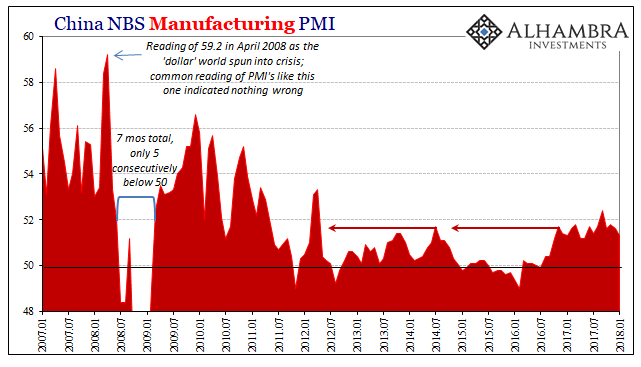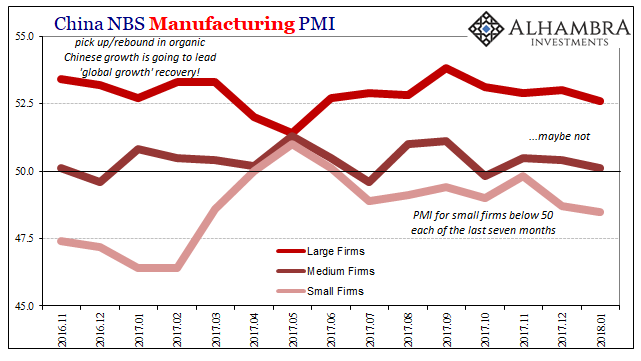According to China’s official PMI’s, those looking for a boom to begin worldwide in 2018 after it failed to materialize in 2017 are still to be disappointed. If there is going to be globally synchronized growth, it will have to happen without China’s participation in it. Of course, things could change next month or the month after, but this idea has been around for a year and a half already.
Without China, growth won’t be synchronized and it certainly can’t be global. The official index for manufacturing was estimated to have been 51.3 in January 2018, down from 51.6 in December, as well as its multi-year (but still not impressive) high of 52.4 published just ahead of the 19th Communist Party Congress.

The new orders component dropped to 52.6, the lowest level since last May. Those reporting increases to production levels were the least since last July.

None of these comparisons, however, really mean all that much anyway. They are relative only to levels recorded for recent years. That’s ultimately the value of these PMI’s, meaning that like others of China’s economic statistics, they show the Chinese economy remains in a low or no-growth state. What changes month to month is the variable condition of low-growth; a little more low-growth perhaps last fall, and a little less to end last year.
The downshift toward the last months of 2017 was apparently broad-based. The manufacturing PMI for large firms dropped to 52.6 in January, the lowest since May 2017. Small firms have been on the other side of 50 for seven straight months again, the part of China’s industrial sector that was devastated in the 2015-16 downturn. At 48.5 last month, small firms are suggesting the weakest level of growth (perhaps contraction, since the number is less than 50) and activity in a year.

To a small degree, the PMI’s are suggesting similar conditions to what some of the major economic stats have picked up. It isn’t a massive downturn or anything like late 2014, but given the relatively low levels at the peak last year a determined slowing here would seem to suggest, like FAI, that we may have seen the best out of China, and therefore global growth (unsynchronized as it ended up).











Leave A Comment